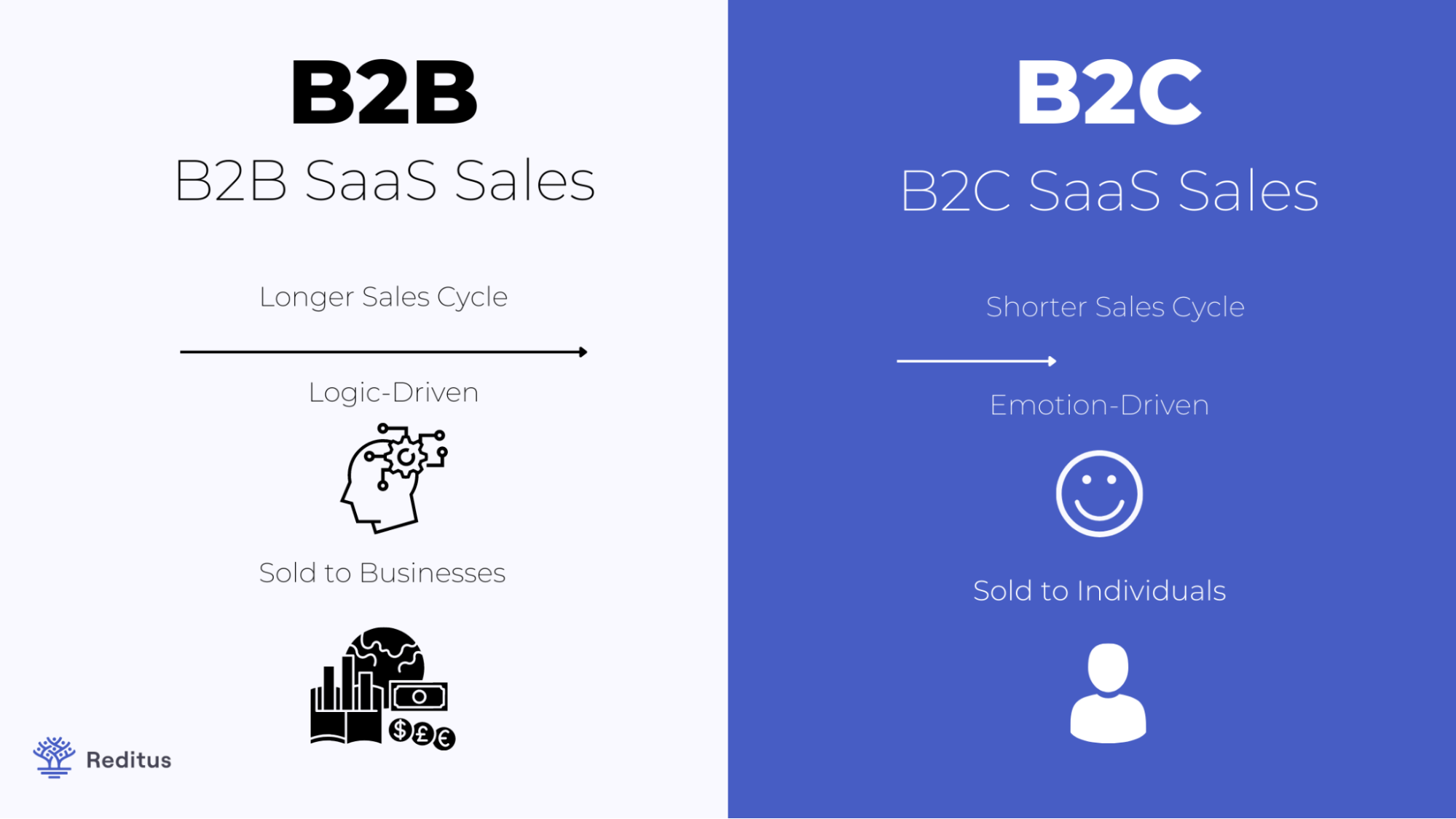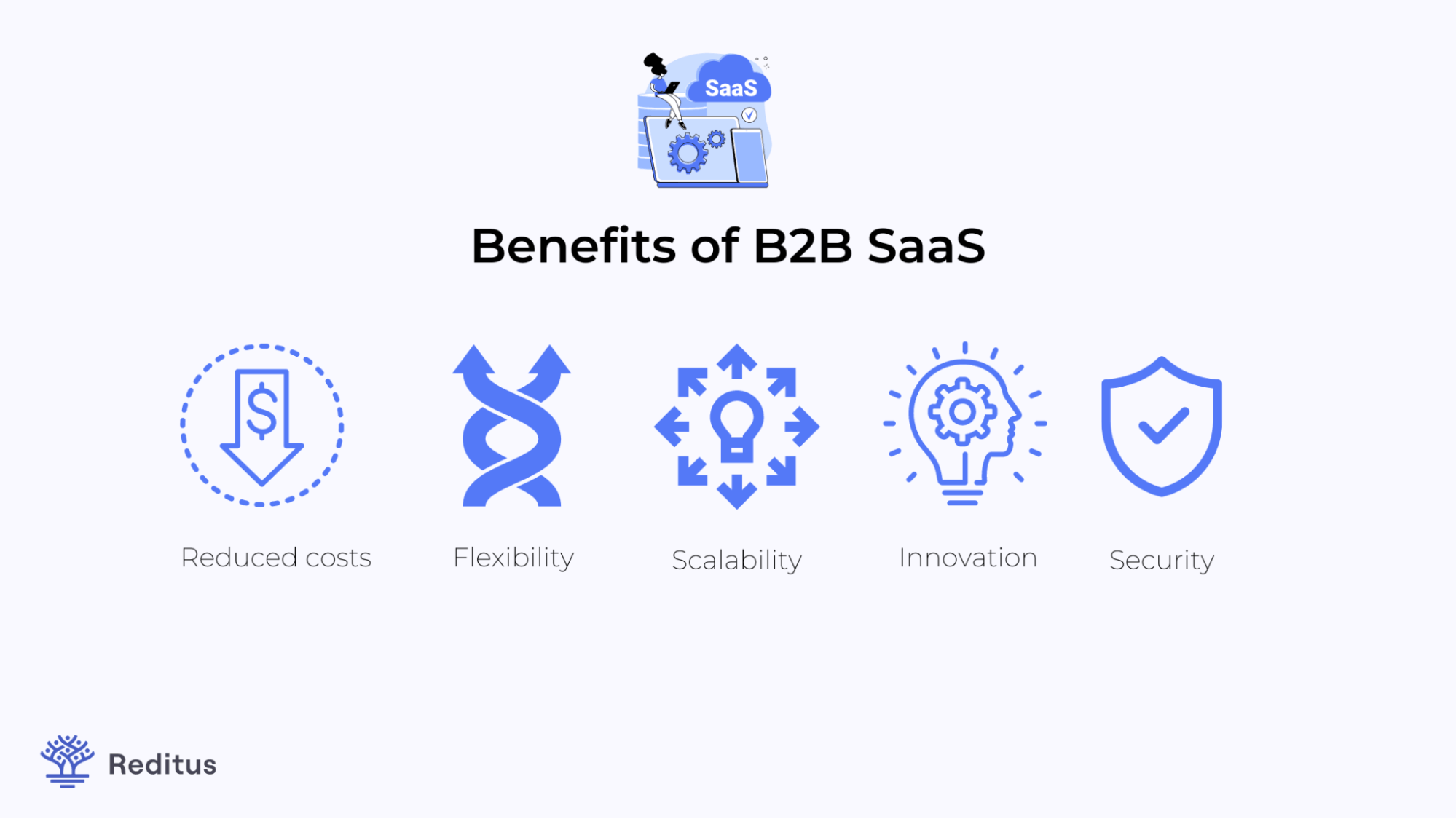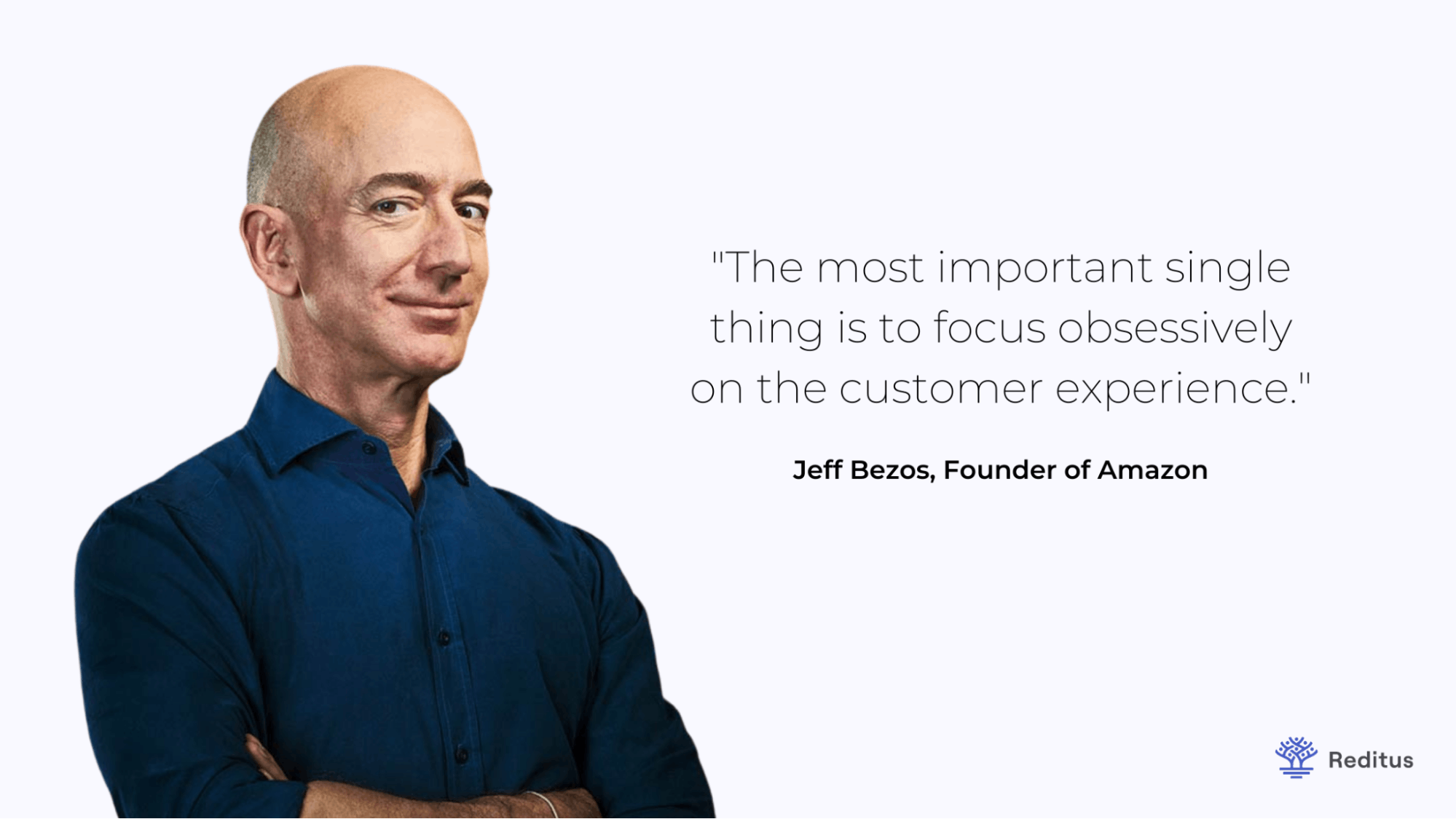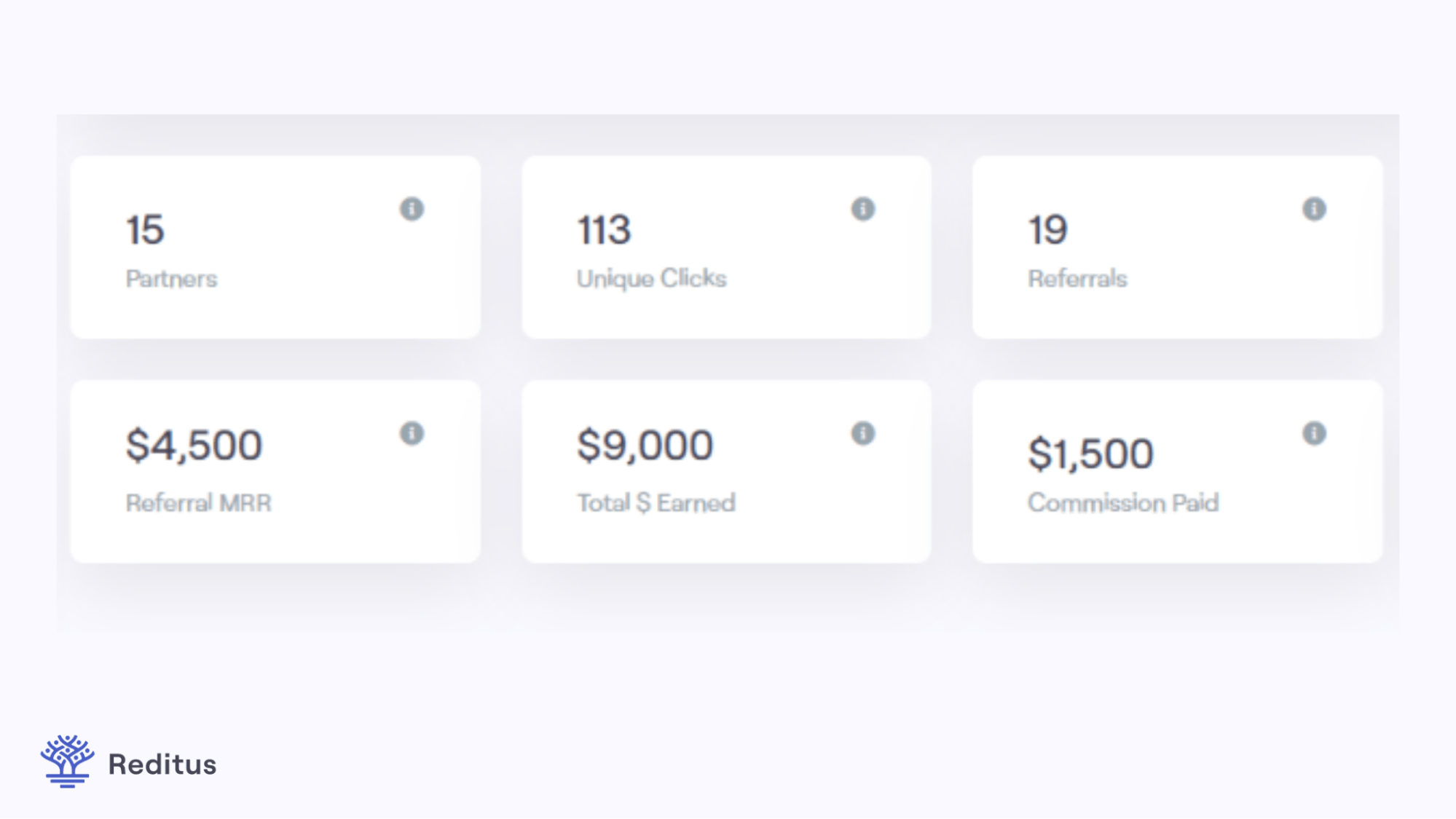How to grow a B2B SaaS Startup: Complete Guide for 2024

As a CEO, you're constantly looking for ways to grow yourb2b saas startup. But the process can seem daunting. Where should you start?
What are the key growth drivers?
And how do you ensure that your growth is sustainable?
Today, we'll walk you through the essential steps for growing a B2B SaaS company. We'll cover everything from identifying your target audience to scaling up operations.
Whether you're a rookie CEO or just seeking extra guidance, read on for helpful tips and insights.
Table of contents
What Makes B2B SaaS Companies Special?
Before diving into the details, it's essential to understand what sets B2B SaaS companies apart from B2C companies.
For starters, B2B SaaS companies are built on recurring revenue.
In other words, customers typically pay a subscription fee to access the software.
This recurring revenue model creates a more predictable and sustainable business, so B2B SaaS companies are often viewed as fast growing startups.
Another key difference is that B2B SaaS brands have longer sales cycles than most B2C companies. A team, not an individual, usually decides to buy a new software solution.

As a result, it can take months (or even years) to close a deal.
For example, a company might not buy a CRM solution until they've had a chance to test the product and see if it's a good fit for its sales team.
This means that B2B SaaS companies need to be patient with growth.
It's crucial to remember that a few big deals can significantly impact your bottom line.
Growing a B2B startup is about finding the right mix of high-quality leads and staying patient through the sales cycle.
What Are the Advantages of B2B SaaS Products?
A few key advantages of B2B SaaS products make them appealing to businesses. Some of the most significant include:

- Reduced costs: B2B SaaS products are typically subscription-based, meaning businesses only have to pay for what they use. This can save companies a significant amount of money, especially compared to traditional software licenses.
- Flexibility: B2B SaaS products are usually cloud-based, which gives businesses more flexibility when it comes to where and how they use the service.
- Scalability: B2B SaaS products are designed to be scalable, so businesses can easily add or remove users. This makes it easy to grow (or downsize) the company as your operations change.
- Continuous innovation: B2B SaaS companies constantly innovate and add new features to their products. This means that businesses can always be up-to-date with the latest software.
- Improved security: B2B SaaS products usually have better security than traditional on-premise software. The responsibility for safety lies with the provider, not the customer.
What Are Some of the Challenges of a B2B SaaS Business?
Of course, no business model is perfect. A few challenges come with growing and scaling a B2B SaaS startup. These include:
- Long sales cycles: As we mentioned before, a team, not an individual, decides to buy a B2B SaaS product. This can lengthen the sales cycle and make it difficult to close deals.
- High customer acquisition costs: It can be expensive to acquire new customers, especially if you're selling to businesses. Businesses are usually more reluctant to take risks on new products.
- The need for ongoing marketing: B2B SaaS products typically have a long shelf life. Companies need to continue marketing the product even after it's been sold.
- Competition: The B2B SaaS market is increasing, so there's a lot of competition. This can make it difficult to stand out.
What Are Some Tips for Growing a B2B SaaS?
Growing a B2B company is a bit like running a marathon. It's a long, slow process that requires a lot of patience and perseverance.
You can't just sprint to the finish line.
You need to pace yourself and focus on the long-term
That said, you can take a few steps to help ensure that your B2B SaaS company is successful.
Here are a few tips:
1. Focus on Product-Market Fit
The first step is ensuring that you have a product that people want. This might seem obvious, but it's often overlooked.
You must ensure that your product solves a problem for a specific buyer persona.
If you're not sure whether your product is a good fit for the market, take some time to talk to potential B2B customers and get their feedback.

Adopt a "test and learn" approach. Try out different marketing strategies and see what works best for your product.
Just keep in mind; the best validation comes from actual sales, not just "likes" or "views.
The business graveyard is full of products people said they liked but never actually bought.
2. Segment Your Growth Into Stages
The next step is to segment your growth into stages.
This will help you focus on the most critical tasks and avoid getting bogged down in the details.
The typical stages of growth for a B2B business company are:
- Startup: This is the period before you launch your product. You'll need to validate your product idea and build a minimum viable product (MVP) during this stage.
- Growth: This is the period when you launch your product and start acquiring B2B customers.
- Maturity: This is the period when you focus on growing your customer base and scaling your business.
- b This is the period when you need to focus on renewing your existing customers or expanding into new markets.
Depending on your product and your target market, you might need to tweak this timeline.
The rules aren't set in stone; it's up to you to segment your growth in a way that makes sense for your business.
Just ensure that you're not biting off more than you can chew.
Also, consider adding specific milestones and key results for each growth stage. This will help you track your progress and ensure that you're on track to reach your goals.
For example, your milestones for the startup stage might be:
- Research target audience and define an ideal customer persona
- Develop MVP
- Launch MVP
- Acquire the first 10 customers
You could also have specific key results, such as:
- Average customer acquisition costs
- Churn rate
- Number of signups
- Monthly recurring revenue
By setting milestones and key results, you can track your progress and ensure that you're on track to reach your goals. It can also help you identify any potential problems early on.
3. Understand Your Unit Economics
To be successful, you need to clearly understand your unit economics.
Your unit economics are the costs associated with acquiring and servicing a customer.
You need to make sure that your unit economics align with your business model.
For example, you need to ensure that your customer lifetime value (LTV) is greater than your customer acquisition costs (CAC).
If your LTV is lower than your CAC, you're effectively losing money on every customer you acquire.
If you're unsure how to calculate your LTV or CAC, there are plenty of online resources. Some of our favorite guides include:
- Understand the LTV/CAC Ratio Concept
- What is CAC-LTV Ratio?
- Why LTV/CAC Ratio is the Lifeblood of SaaS + How to Calculate It
Once you have a clear understanding of your unit economics, you can think about ways to improve them.
For example, you might need to focus on reducing your customer churn rate or increasing your ARPU (Average Revenue Per User).
You might also need to rethink your sales and B2B marketing plan if your CAC is too high.
You might even need to change your business model if your unit economics don't make sense.
Of course, you don't need to have everything figured out from the start.
As your business grows, you'll better understand your unit economics and how to improve them.
4. Build a Strong Team
No business can succeed without a strong team.
You need to surround yourself with people who are experts in their field and who share your vision for the company.
Start by hiring a team of talented individuals who can help you achieve your goals.
As your business grows, you can start to delegate tasks and give your team more responsibility.
You should also focus on building a solid company culture.
Your company culture should be based on your core values and reflected in everything you do.
For example, if you value teamwork, you should ensure that your team can work together effectively.
If you value customer satisfaction, you should ensure that your team provides the best possible customer support.
Building a solid team is essential for any business, but it's especially vital for a startup.
A strong team can help you overcome any challenges you face and will be essential for your long-term success.
5. Focus on Your Customers
Your customers are the lifeblood of your business.
Without them, you wouldn't have a business in the first place.
That's why it's so important to focus on your customers and give them the best possible experience.
As Jeff Bezos once said, "The most important single thing is to focus obsessively on the customer experience."

You need to make sure that your customers are happy and getting the most out of your product or service. This can be done by constantly collecting feedback and making changes based on that feedback.
You should also focus on building a solid relationship with your customers. The better you know your customers, the better you'll be able to serve them.
Make an effort to get to know your customers and understand their needs.
Some ideas to do it include:
- User testing: User testing is a great way to get to know your customers and understand how they use your product. You can use user testing to identify areas where your product could be improved.
- Customer surveys: Customer surveys are another great way to get to know your customers. You can use surveys to collect feedback on your product or service and understand what your customers want.
- Customer interviews: You can use customer interviews to understand their needs and pain points. Customer interviews can be done in person, over the phone, or via email.
By focusing on your customers, you can ensure that they're happy and continue using your product or service.
6. Leverage Automation
As your business grows, it's essential to ensure that you're efficiently managing all of the tasks that come with it.
Manual tasks like data entry, customer support, and marketing can take up valuable time and resources that could be better spent elsewhere.
That's why it's crucial to leverage automation wherever possible. Automation can save you time and resources and help you scale your business.
You can automate many of the mundane tasks that come with running a business, such as data entry, customer support, and marketing.
You can also use automation to help you manage management, fulfillment, and billing.
Some of the key benefits of automation include:
- Increased efficiency: Automation can help you save time and be more efficient in managing your business.
- Reduced costs: Automation can help you reduce costs by eliminating manual labor and freeing up resources for other tasks.
- Improved customer experience: Automation can help you improve the customer experience by providing faster and more accurate service.
By leveraging automation, you can focus on other aspects of your business while still getting the most out of your time and resources.
7. Invest in Your Team
Your team is essential for the success of your business. Investing in your team means that you're investing in your business's future.
You must ensure that your team is motivated and has the necessary skills and knowledge to succeed.
One way to do this is by offering ongoing training and development opportunities. This will help your team stay updated on the latest trends and technologies in your industry.
You should also provide competitive compensation and benefits to attract and retain the best talent.
Finally, make sure to recognize your team's achievements.
Acknowledging their hard work and contributions will help to motivate them and make them feel more valued.
Investing in your team ensures that your business is well-positioned to succeed in the long run.
8. Experiment and Test
Innovation is vital for growth. As your business grows, you must constantly experiment and test new ideas. This will help you stay ahead of the competition and create a better product or service for your customers.
You should start by creating a hypothesis about what changes you want to make and test it out. This could include changes to your product or service, pricing, and marketing strategies.
Here's how it works:
- Identify the problem or opportunity you want to address
- Develop a hypothesis about how to solve it
- Design and experiment to test the hypothesis
- Analyze the results and draw conclusions
Experimenting and testing can help you optimize your business processes, discover new revenue opportunities and improve customer satisfaction.
By taking the time to experiment and test, you can ensure that your business is well-positioned for long-term growth.
9. Start a Solid Partner Program
Word-of-mouth is still one of the best marketing channels for any business.
If you can get your customers to tell their friends about your product or service, you'll be able to grow your business quickly and efficiently.
One of the best ways to do this is to start a SaaS partner program.
A partner program is a way to reward your customers for referring new customers to your business. For example, you could offer a discount or a commission for every new customer they refer to you.
A partner program is a great way to grow your business, but it's also essential to ensure your partners are happy. Here's where a partner management system comes into play.
A partner management system is a tool that helps you manage your partner program. It allows you to track your partners, pay them commissions, and keep them updated on your latest news and offers.
With Reditus, for example, you get access to all the features you need to manage and optimize a partner program, including:
- Partner management features: Organize and manage all your affiliates and partners in one central location.
- Payment processing: Automatically pay your partners their commissions, and keep track of payments made.
- Lead tracking: Keep track of which leads are generated by your partners, and see which ones convert into customers.
- Program performance tracking: Monitor the performance of your partner program with detailed reports.

And, to be honest, that's just barely scratching the surface.
Schedule a free demo to get a complete picture of what a partner management system can do for you.
Growing a B2B SaaS Startup: FAQs
Now that you know the basics of growing a B2B SaaS startup, here are some FAQs to help answer any questions you may have:
What Are the Critical Steps to Launching a Successful B2B SaaS Business?
The most important steps when launching a B2B SaaS business include creating an attractive product or service, researching and targeting your market, building an effective sales and marketing strategy, and investing in your team.
What Is the Best Way To Do Market Research?
Find a painful problem in the market by talking to customers and analyzing the competition. Then, conduct market surveys and focus groups to determine your target market's needs wants, and desires.
Also, use online research tools like Google Trends and social media analytics to track your product or service demand.
Some other research methods might include:
- A/B testing
- Competitor analysis
- Usability testing
- Customer interviews
Ultimately, the best way to do market research is to comprehensively combine different methods to understand your target audience's needs.
What Is the Best Way To Generate Leads?
Generating qualified leads for B2B SaaS businesses can be done using a variety of tactics, such as content marketing, email marketing, SEO, paid search, and social media advertising. Combine these tactics to reach as many potential customers as possible.
Also, tracking and measuring the performance of your lead generation efforts is key to ensuring success. Use tools like Google Analytics and A/B testing to track your campaigns' performance and ensure you're using the best strategies to generate leads.
What Is the Best Way To Scale a B2B SaaS Business?
There's no one-size-fits-all answer to this question.
Still, a critical factor in scaling and growing a B2B SaaS business is to invest in a partner management system. This will help you manage your partners and optimize your partner program, which can significantly expand your reach and generate new customers.
How Can I Maximize Customer Retention?
Customer retention is one of the most important aspects of a successful B2B SaaS business. To ensure customer loyalty and repeat business, focus on offering excellent customer service and delivering products and services that meet your customers' needs.
The Bottom Line
Growing a B2B SaaS can be challenging, but it's doable.
By following the tips in this article, you'll be well on your way to growing a successful business.
Remember to focus on your customers, look for ways to improve your product or service, and start a solid partner program.

